Entertainment & Convention centres Finance & Lawyers Healthcare & Animal Health Hotels & Accommodation Interpreters & Language
Museums & Libraries Shopping & Markets Sport Telecommunication & ITTransport & DrivingUtilities & Property Managers
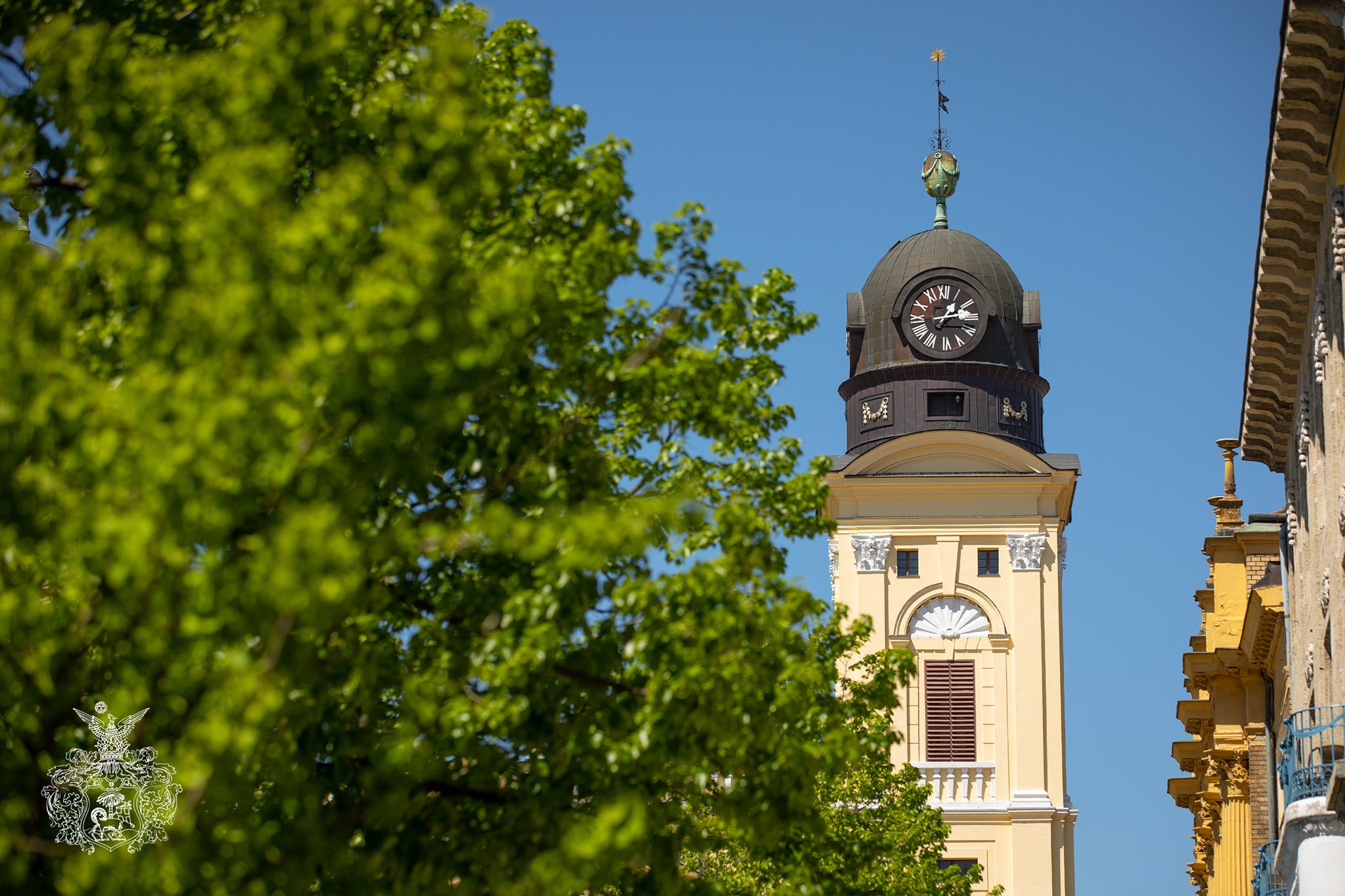 Reformed Great Church of Debrecen
Reformed Great Church of Debrecen
The Reformed Great Church of Debrecen is the most characteristic building in Debrecen, with a floor area of 1,500 m². It is the largest Reformed church in the country. It was here that Lajos Kossuth read out the Declaration of Independence on April 14, 1849. The main structure was rebuilt several times. Today’s familiar Classicist form was developed after the great fire of 1802. The Reformed Great Church is a major tourist attraction in Debrecen, welcoming visitors all year round. On the ground floor of the church, there is a Kossuth Memorial Exhibition, and Church History Exhibition, one of the most important items of the exhibition is the original copy of the Vizsoly Bible. The Bible Mock-up and Painting Exhibition is a permanent exhibition that includes 25 large-scale mock-ups by Pastor Lajos Csia and 52 paintings by painter Kálmán Tichy. In the east tower, an accessible lift takes visitors up to the sixth floor, the attic. After the old clock mechanism and the church cloak, originally designed by Mihály Péchy, visitors can walk up to the dome of the west tower to the Rákóczi bell and enjoy the panoramic view from the walkway between the two towers. In addition to regular services, exhibits of religious history, organ concerts, and other musical events are also on the schedule. The church was declared a National Monument in 2013.
4026 Debrecen, Piac street 4-6.
+36 52 614 160
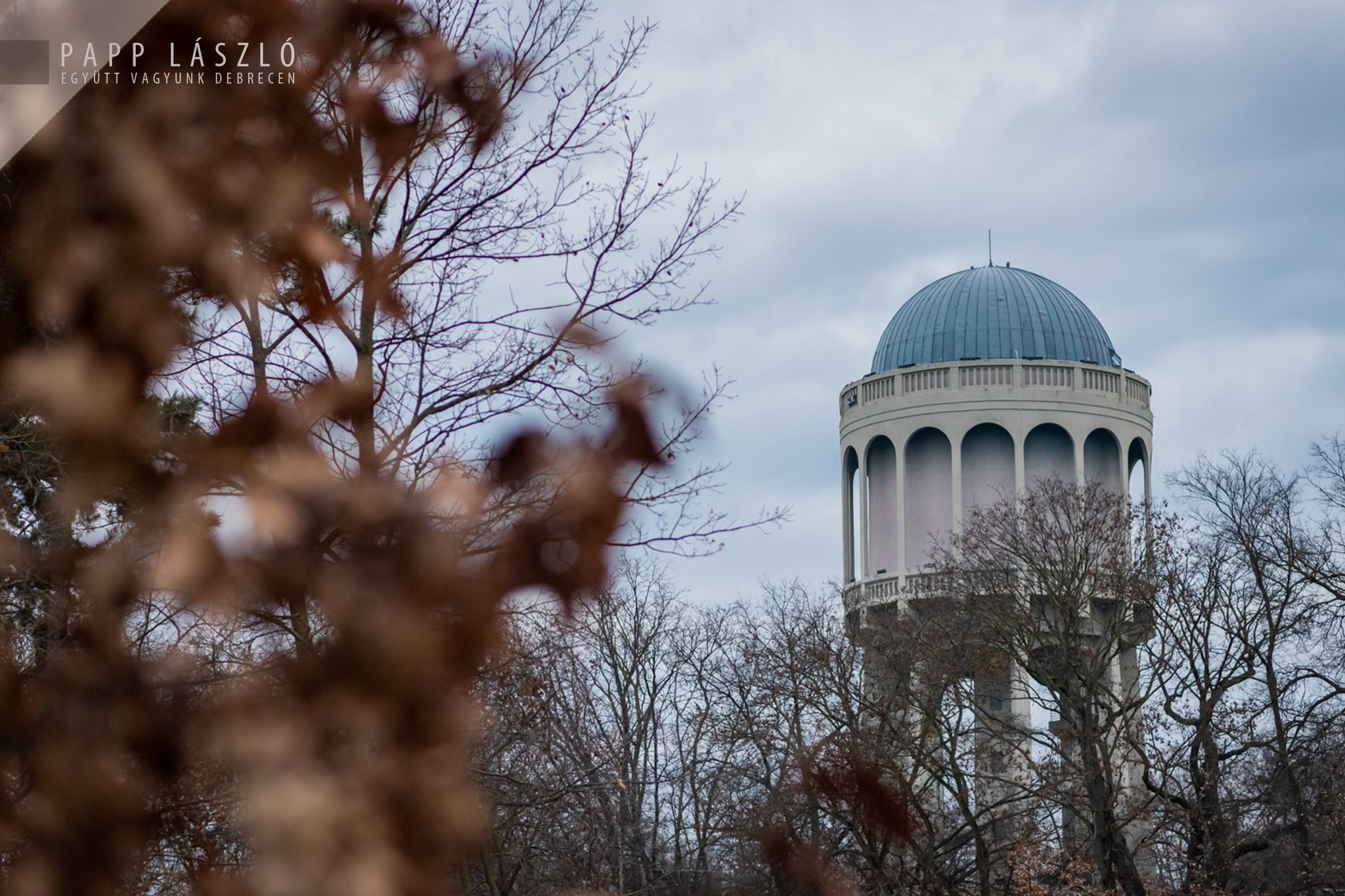 Nagyerdei Water Tower
Nagyerdei Water Tower
It is a venue for events and offers several services. Bicycle-rickshaw rental and bicycle rental, Tourinform: General information about the tourist attractions of the Great Forest – the University and the Great Forest adventure tours, gift shop with Debrecen souvenirs, climbing wall with a 13 m high climbing wall, from the upstairs terrace of the Great Forest Water Tower, 34 m high platform over the canopy of the Great Forest with a view of the forest, the University town and the whole of Debrecen, café, outdoor concert venue, nightclub and a splash bar.
4032 Debrecen, Pallagi road 7.
+36 30 171 8997
 Zsuzsi Narrow-Gauge Railway
Zsuzsi Narrow-Gauge Railway
The most stylish way to explore the forest ghosts that surround the city is with Debrecen’s oldest lady, a steam locomotive called Zsuzsi. Over 130 years old, Zsuzsi is the oldest narrow-gauge railway in the country. At its terminus, Hármashegyalja, there is a wonderful forest environment, nature trails, a fish pond, a lookout, a playground, a picnic area, a Nature House with an observatory and a forest school, which teach visitors to love and protect nature.
4034 Debrecen, Ruyter street 1.
+36 30 210 0545
+36 52 417 212
 Debrecen Zoo and Amusement Park
Debrecen Zoo and Amusement Park
It is home to the country’s first rural zoological and botanical garden, founded in 1958.
Zoo and Botanical Garden: The Great Forest is a protected 17-hectare area with nearly 1,400 species of 165 animals from five continents. Rare, exotic animals – toucans, flamingos, ibises, gibbons, kangaroos and hippos – are on display, alongside native fauna and indigenous domestic animals. In addition to the native species of plants found in the Great Forest and other indigenous species, you can also see ornamental species and their varieties from all over the world. Throughout the year there are themed programmes and exciting night walks for visitors, who occasionally have a special companion in the form of penguins.
Amusement Park: named after Matyi Lúdas, Amusement Park is the region’s largest and most patronised, with 17 play facilities.
4032 Debrecen, Ady Endre road 1.
+36 52 310 065
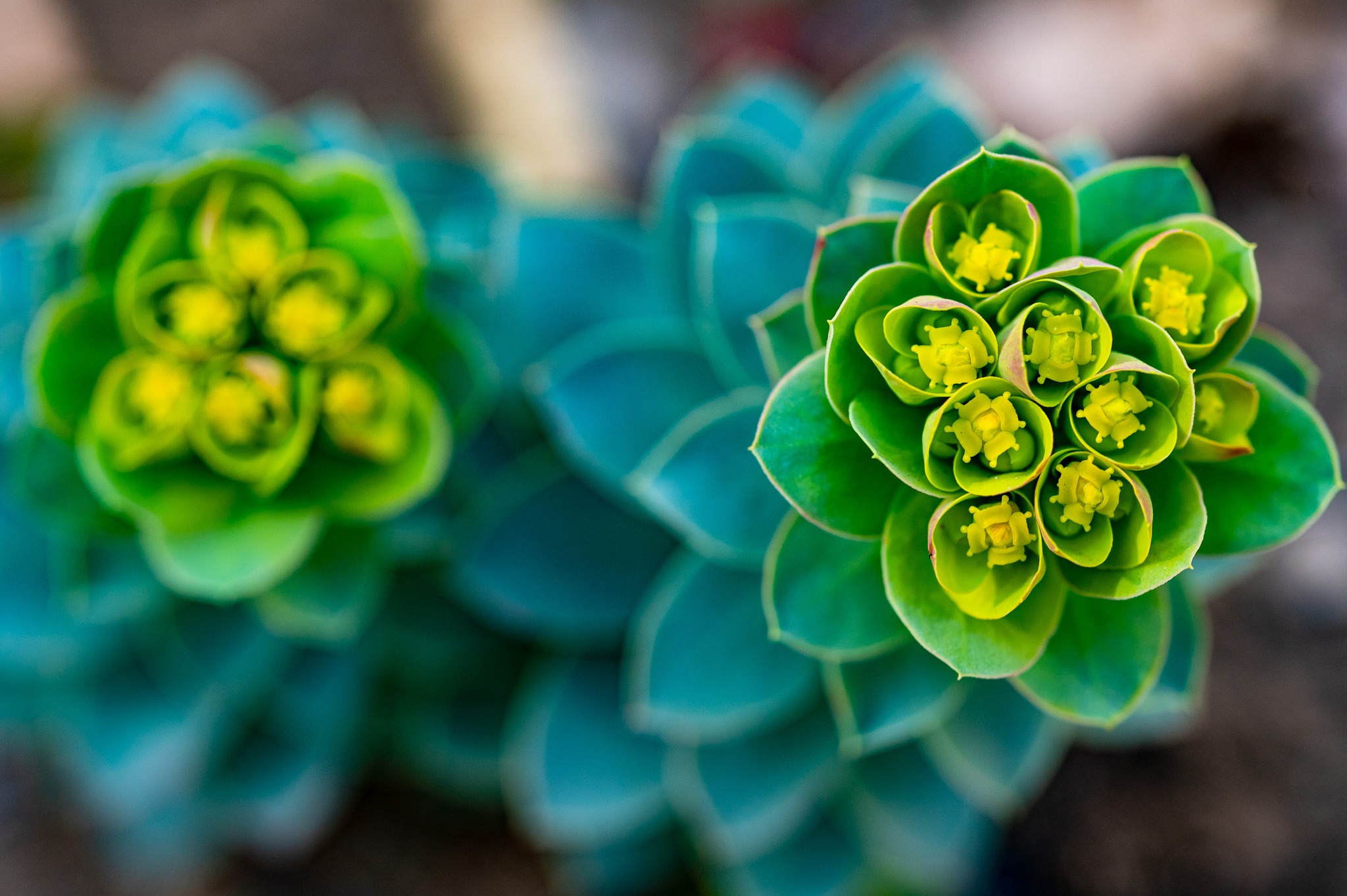 Botanical Garden
Botanical Garden
The Botanical Garden behind the main campus building of the University of Debrecen was established in 1928 when the original garden that had belonged to the Reformed College was demolished. It began with a donation of land from the University of Debrecen, 13.7 hectares, located behind the university. The first part of the garden to be established was the Herb Garden. Its purpose was both aesthetic and scientific and for teaching purposes. In 1935 the rock garden was established and between 1935 and in 1940 the rock bottom of the lake was prepared and completed. Post-1940, plant species of Hungarian origin were the priority. The largest greenhouse complex is the palm house, containing tropical plants from sub-tropical areas, tropical spices and fruits including vanilla, pepper, avocado, and banana, not forgetting the Pineapple.
Today it keeps nearly 8,000 plant species specimens, although around 6000 are on display.
4032 Debrecen, Móricz Zsigmond körút
4027 Debrecen, Egyetem square 1.
+36 52 512 900
 Great Forest Park
Great Forest Park
Debrecen’s Great Forest is home to special protected species of plants and animals and is named after its huge 100-120-year-old trees. The forest was declared a park in the 18th century, and in 1939 it was entered in the register of protected natural areas under number 1. The protected area is located in the inner area of Debrecen, the 1,092 hectare protected area is situated in the northern part of the town, in the part of the university town. The aim of the declaration of the protected area is to preserve the old oak and the surrounding forest communities for posterity. The Great Forest is currently home to 2 specially protected species, 49 protected vertebrate species, and 39 protected invertebrate species. In order to ensure the conservation of these species, special attention must be paid to the preservation of their habitats, which is essential for the maintenance of biological balance.
Debrecen
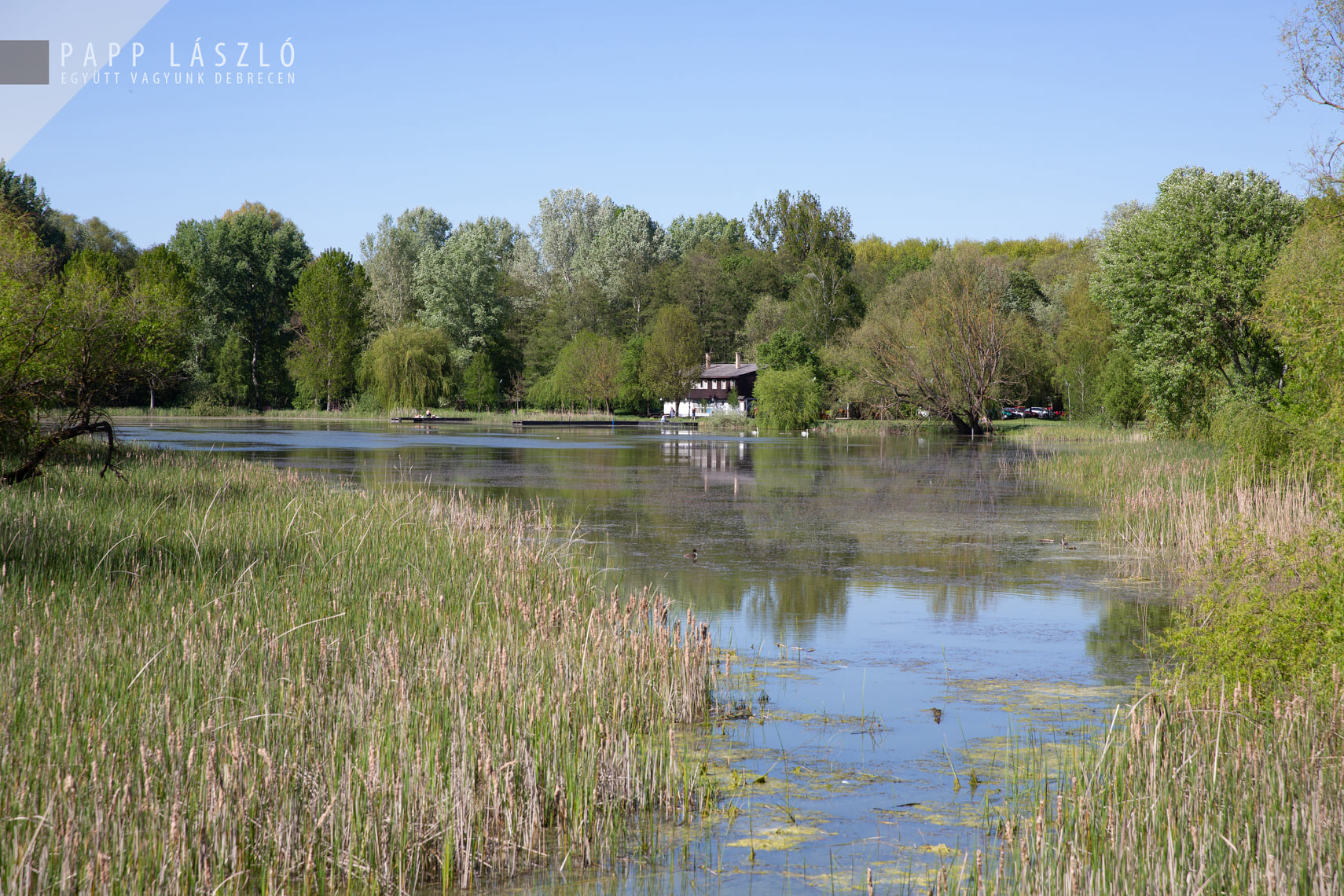 Lake Vekeri
Lake Vekeri
The Forest Puszta in Debrecen extends in a semicircle about ten kilometres east of the city. It is a popular recreational and hiking area, with hiking and cycling trails, lookouts, playgrounds, a show house, an arboretum, and a picnic and fishing area for nature lovers. Lake Vekeri is one of the most popular places in the Forest Puszta, accessible by bus, car and bicycle from Debrecen. The Panorama road winding along it leads hikers to further attractions. The Bánk arboretum and the Fancsikai lakes are among the places to visit along the way.
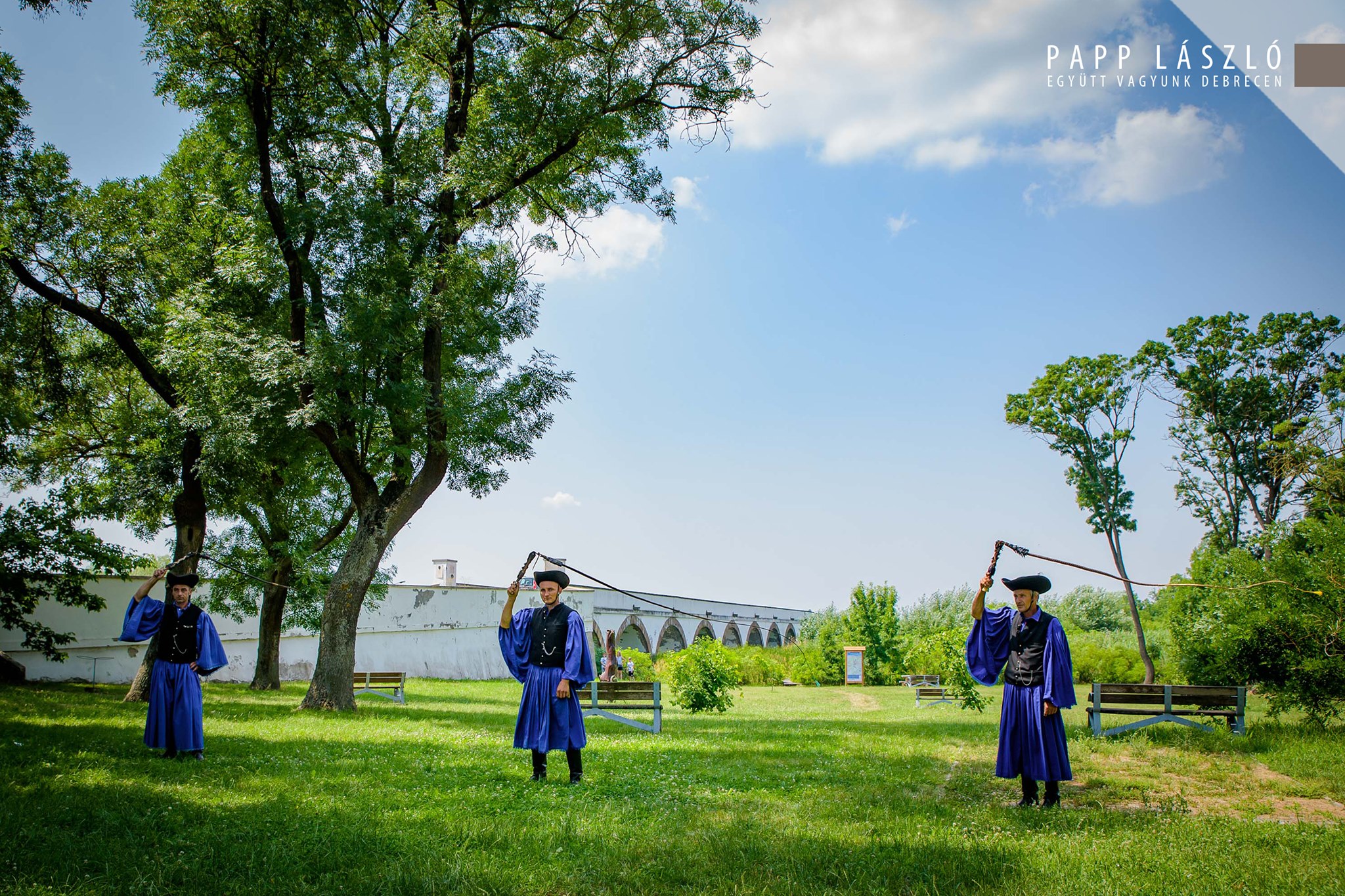 Hortobágy
Hortobágy
Hortobágy is home to 350 species of birds and tens of thousands of birds in a variety of locations for the amateur naturalist and even the seasoned ornithologist. The famous crane migration is one of the most attractive natural events of the autumn sunsets, an unforgettable experience either individually or as part of a guided tour. As well as a special evening walk in the silver-certified Stargazer Park. The Kilenclyukú Bridge is the symbol of the Hortobágy, Hungary’s longest and most beautiful stone road bridge. It was built in 1833 to the design of Ferenc Povolny. Every year on 20 August, a nationally renowned fair of fairground and folk art is held next to it. Mátai Ménes has a 300-year history and is one of the most traditional stud farms in Europe. Its most popular programme is the wilderness carriage ride, where guests can wander through the wilderness in a carriage and meet native animals in their natural environment. In addition, you can visit the Hortobágy Shepherd Museum, the Hortobágy Wildlife Park, the Ohat fish ponds, and the Hortobágy Bird Park and Bird Hospital. Today it keeps nearly 8,000 plant species specimens, although around 6000 are on display.
4071 Hortobágy Petőfi square 9.
+36 52 589 321
 Museum of Debrecen Reformed College
Museum of Debrecen Reformed College
,The Museum of the Reformed College of Debrecen is a member institution of the Collections of the Reformed Diocese of Tiszántúli. After centuries of history and a public period in the 19th century, it was only in 1964 that it received its operating licence. Like the other collection branches, the Great Library and the Archives, the museum is, on the one hand a diocesan, i.e. regional, institution, and on the other hand a museum of one of the most patrician Hungarian schools, the Debrecen College, founded in 1538. This double link is evident in all areas of its operation, from the collections to the permanent exhibitions. The museum’s inventory currently includes nearly 17 000 objects in the archaeology, history, school history, fine arts, applied arts, ethnography, and numismatics departments. The most important in terms of numbers is the Department of Applied Arts, which preserves the unique treasures of Hungarian art and embroidery culture.
4026 Debrecen, Kálvin square 16.
+36 52 614 380
+36 52 614 370
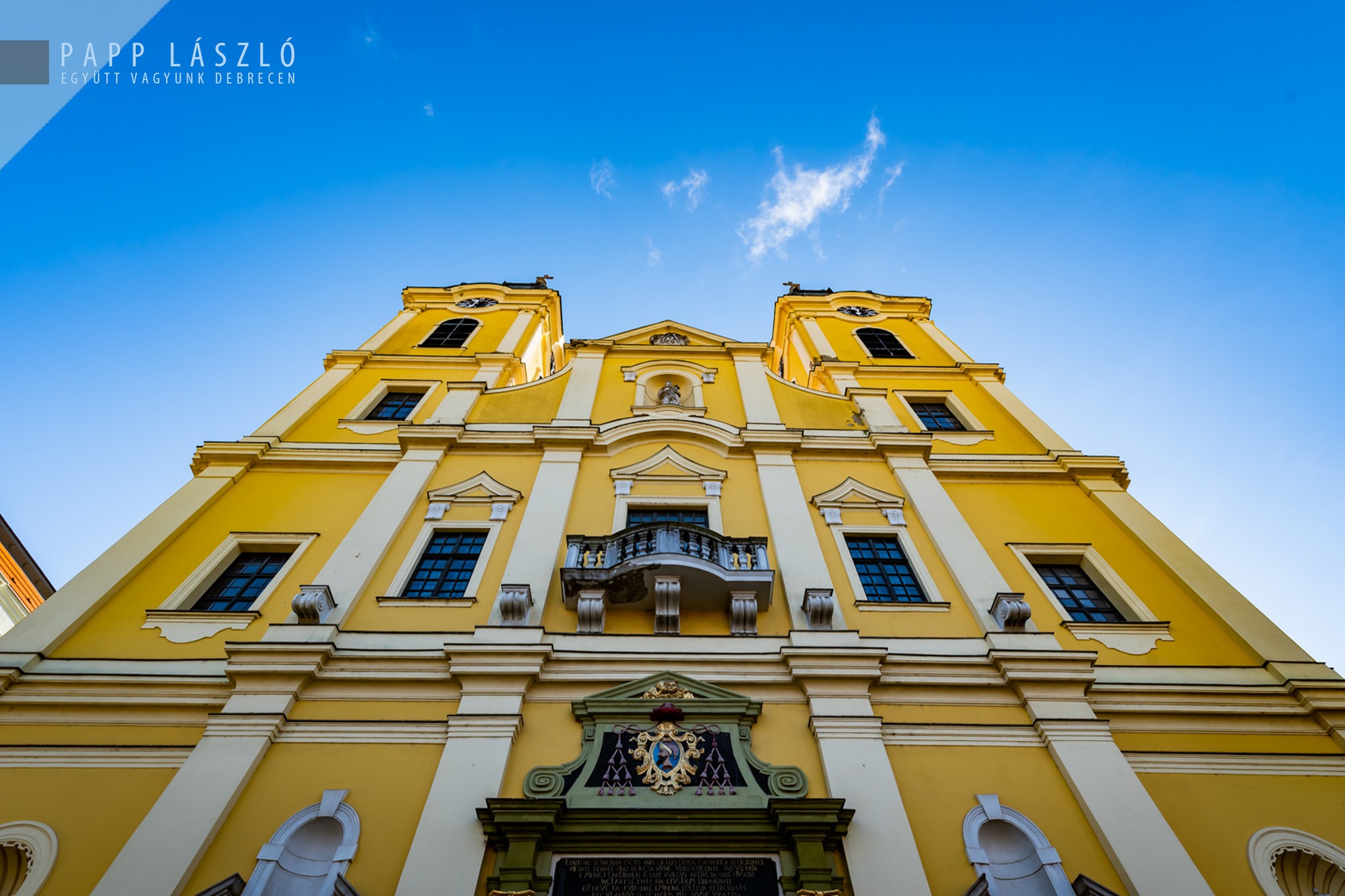 St. Anne’s Cathedral
St. Anne’s Cathedral
The St. Anne’s Cathedral in Debrecen is the seat church of the Debrecen-Nyíregyháza diocese. The cathedral was only a parish church until 1993, the year Pope John Paul II elevated it to cathedral status with the establishment of the Diocese of Debrecen-Nyíregyháza. The Baroque church was completed by 1746 and rebuilt in the tile style by 1834. The church was consecrated in honour of St. Anne, the mother of the Virgin Mary, in 1746. In the mural next to the gates, on the right Prince St. Imre, on the left St Stephen in richly pleated clothes, with a dynamic posture. The central niche statue depicts the Virgin Mary with the Child Jesus. The sculptor is unknown, probably a Baroque master. Above the main entrance is the coat of arms of the founder, Imre Csáky.
4024 Debrecen, Szent Anna street 21.
+36 52 536 652
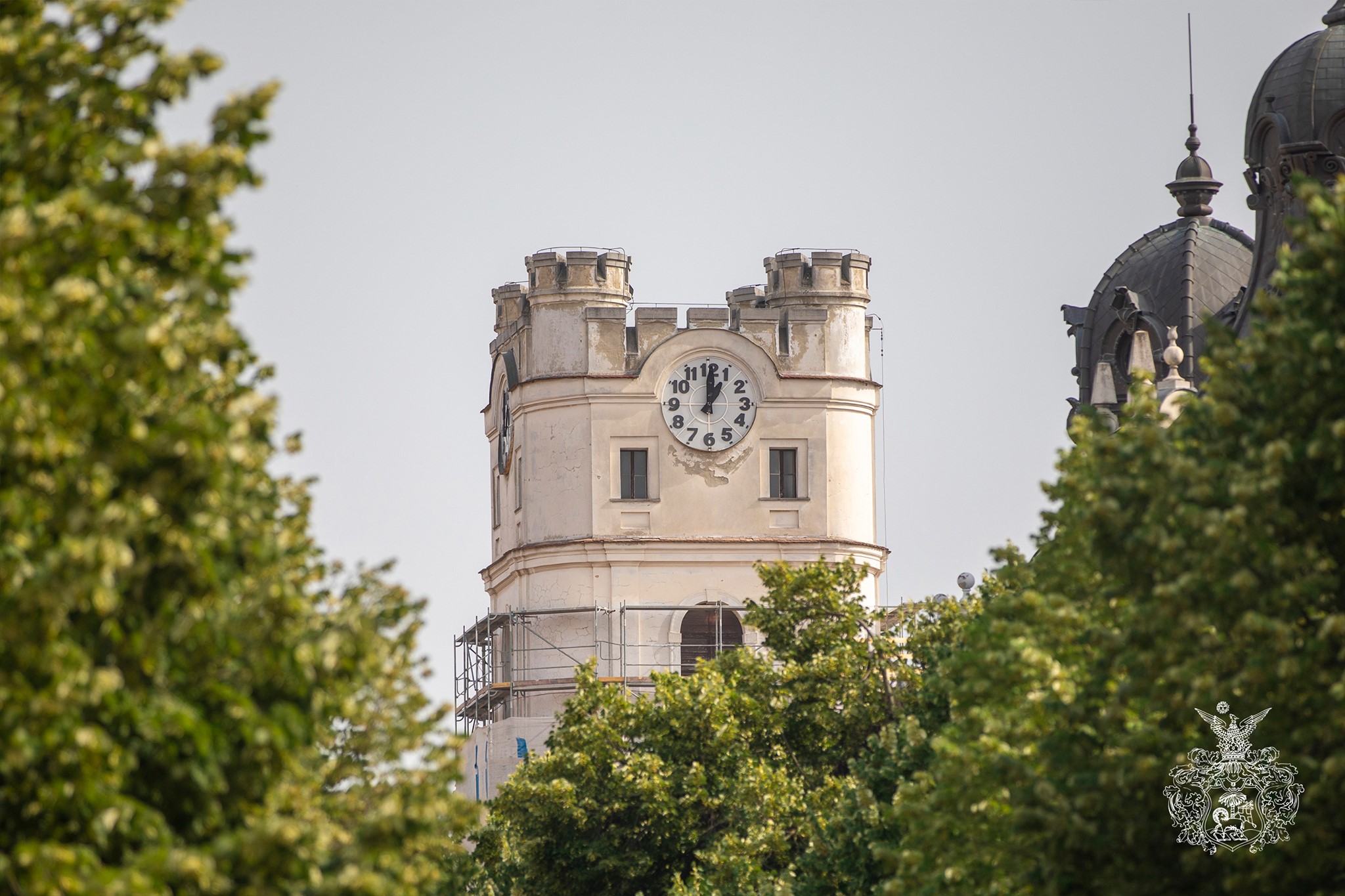 Small Reformed Church
Small Reformed Church
The Baroque building of the second Calvinist church in Debrecen was built in 1731. On 11 January 1860, it served as the venue of the church district’s general meeting, which rejected the Imperial Protestant Patent aimed at restricting Protestant autonomy. The Small Church of Debrecen has witnessed and participated in the events, joys and sorrows of the city’s history, full of adversity and glory, for more than three and a half hundred years. Twice during this long period, the church itself has been the victim of fire, the most formidable enemy of old Debrecen, which often returned.
4025 Debrecen, Révész square 2.
+36 52 342 872
 The Devil’s Trench
The Devil’s Trench
Literally named “the devil’s trench,” Ördögárok is the reconstructed ruins of an ancient entrenchment system located by Zsuzsi Railway line, near Csereerdő stop. Ördögárok is one of the last remnants of an ancient defense system lying on the Northern and Eastern parts of Hungary. Sharpened wood pillars stand along the 2-3-meter deep trench and a wicker-hedge runs on the top of the bank. The strengthened defense system was constructed by Sarmatic tribes settled in the Alföld (Great Plain). In co-operation with them the Romans considered it as a line pushed forward to protect the wide frontier zone of Pannonia province. The preserved and reconstructed ruins of Ördögárok can be approached by Zsuzsi Railway or by bike along road no. 48 towards Vámospércs, or by bus no. 37.
 Hajdúszoboszló
Hajdúszoboszló
Hajdúszoboszló is the most well-known spa resort on the Hungarian Great Plain. Its conditions and services make it a perfect destination for visitors longing for active and passive recreation. In addition to bathing opportunities, the hotels, restaurants, and other service providers of the town offer a wide variety of programs. The well-maintained and landscaped spa resort is perfectly suitable for the recreation of families and those who wish to refresh or recuperate themselves.
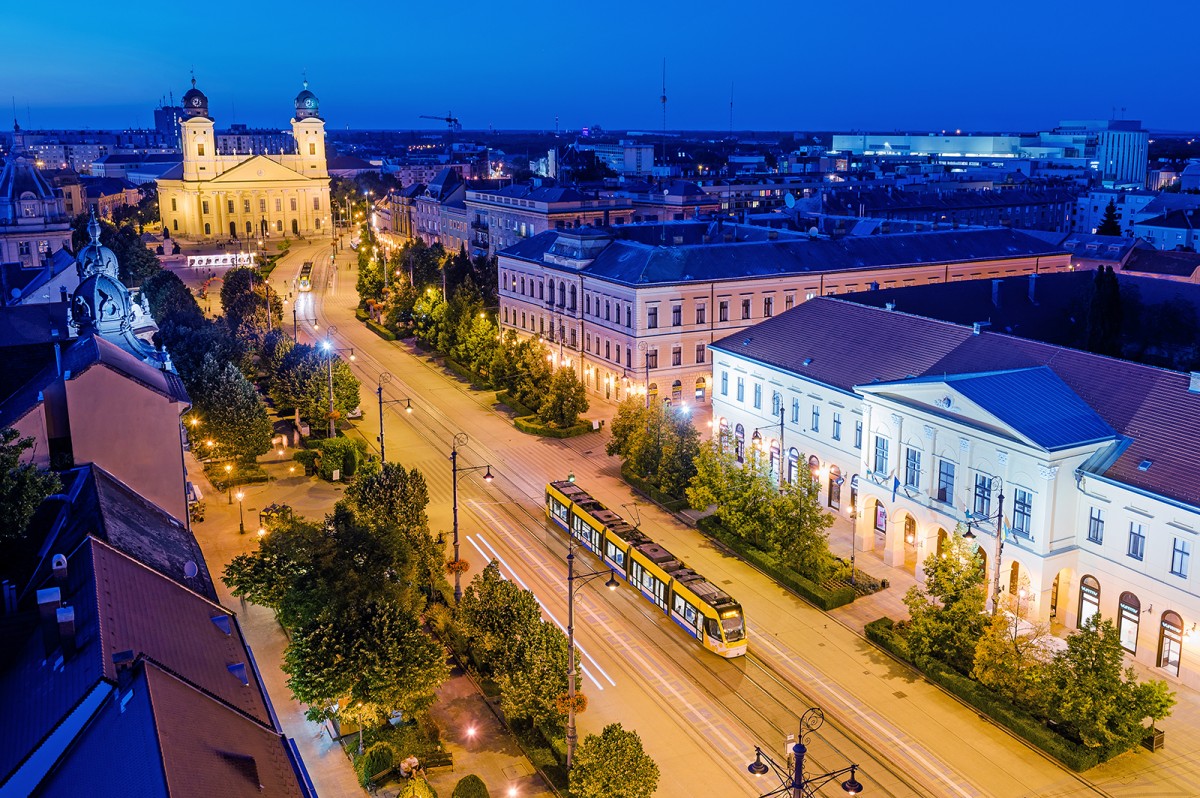 Piac Street
Piac Street
Debrecen’s Main Street was the proud venue of the famous town fairs for 300 years starting in the 16th century. Today’s cityscape, however, is defined by the former merchant houses erected at the turn of the 19th and 20th centuries. The pink office building of Debrecen’s First Savings Bank (on the corner of Kossuth Street) and the twin tenement blocks with the copper spires (on the corner of Simonffy Street) stand out spectacularly against the background of slightly gaudy downtown houses. Debrecen’s Main Street was suitable for traffic for two centuries thanks to a 650-meter-long and 6 to 7-meter wide elevated wooden walkway erected in the 1600s. A small section of the ancient “mud bridge,” now on display outside Hotel Aranybika, is a peerless archeological relic.
4025 Debrecen, Piac street
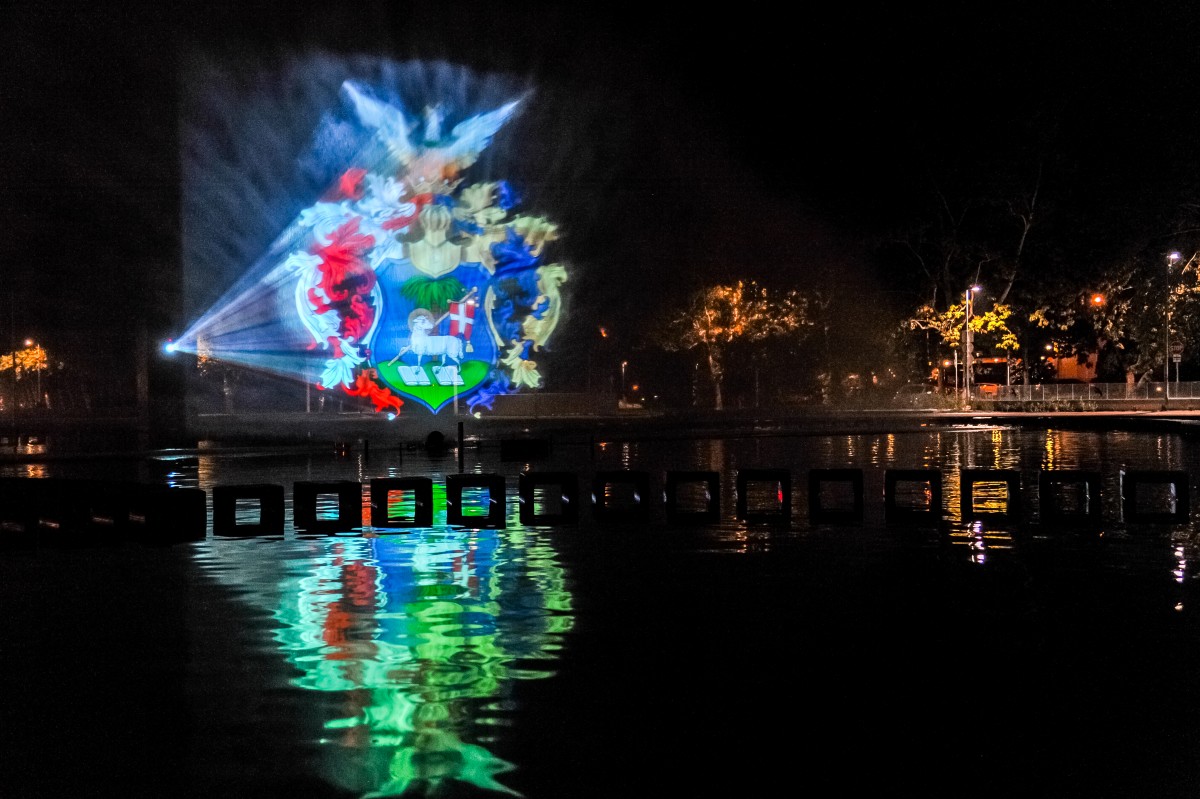 Mist Theatre
Mist Theatre
In the immediate vicinity of Nagyerdei Arena, a one-of-a-kind attraction beckons from spring through fall. The multimedia fountain, or “Mist Theatre,” boasts a 30×10-m, fan-shaped curtain of water vapor, which can be used as a functional movie screen to show clips of Debrecen as well as special laser installations. The more adventurous might want to try the stepping stones across the basin on sweltering summer days.
Great Forest
 Memorial Garden
Memorial Garden
The Memorial Garden occupies the leafy plot between the Big Church and the College. Here stands the statue of István Bocskai, Prince of Transylvania, who settled his “Hajdú” warriors in the vicinity of Debrecen. Another memorial commemorates 40 Protestant preachers sentenced to hard labor during the anti-Reformist revolts. As a high point of his Debrecen visit in August 1991, Pope John Paul II laid a wreath on the base of the pillar to symbolize peace and reconciliation among Christian denominations.
“Lícium tree,” a bushy shrub that stands on the corner of Múzeum and Füvészkert Streets, is, in fact, neither grass nor real tree. The ancient anecdote it is usually associated with evokes 400-year-old theological debates; therefore it is a potent symbol of Debrecen Calvinism.
4026 Debrecen, Kálvin square
The Bishop’s Palace, built in 1913 in Art Nouveau style, is located at 1 Hatvan Street, on the corner of Kossuth Square. The location has been occupied since the Middle Ages by parochial buildings, including the house of Péter Méliusz Juhász. The sculptures decorating the building are the work of András Tóth, the father of the poet Árpád Tóth. Famous one-time residents of the building include Lajos Ady (brother of poet Endre Ady), Zoltán Jánosy (pastor), Géza Juhász (literary historian, Csokonai-scholar), István Szabó (historian), János Dienes (painter, teacher, recipient of the Munkácsy Prize), and Elek Szabó (father of writer Magda Szabó, secretary to the mayor). On the facade of the building toward Piac Street, a 40-meter tower was also erected, which served as a water tower for the building. Below the tower is the coat of arms of the Reformed Church, held up by angels.
The city hall building was built in the Classicist style and is one of Debrecen’s most prominent buildings. The city, as well as the Hall, played an important role in the events of the 1948/49 Revolution and War of Independence. It provided temporary headquarters for the nation’s Defense Committee. Its “chamber of the secret archives” was actually the hiding place of the Holy Crown of Hungary. Today, the edifice houses the City Assembly and the Mayor’s Office.
4024 Debrecen, Piac street 20.
 Country Hall
Country Hall
Debrecen’s most beautiful Art Nouveau-style building was constructed where the city’s first inn (Fehérló Inn) used to stand. The facade of the building is decorated by majolica from the Zsolnay factory, with the coat of arms of Hajdú County in the middle. On the top of the spire, you can see the bronze statue of Árpád, ruler of the Magyar tribes. The most valuable treasures of the County Hall are the stained glass window panes depicting the heads of the seven conquering tribes.
 Former Red Tower
Former Red Tower
The red-brick tower that stood apart from the Great Church was built between 1640 and 1642 for the purpose of holding the 500 kg bell donated to the City of Debrecen by I. György Rákóczi, the Prince of Transylvania. The building was destroyed by the 1802 fire. Today the refounded Rákóczi Bell is kept in the Western tower of the Great Church.
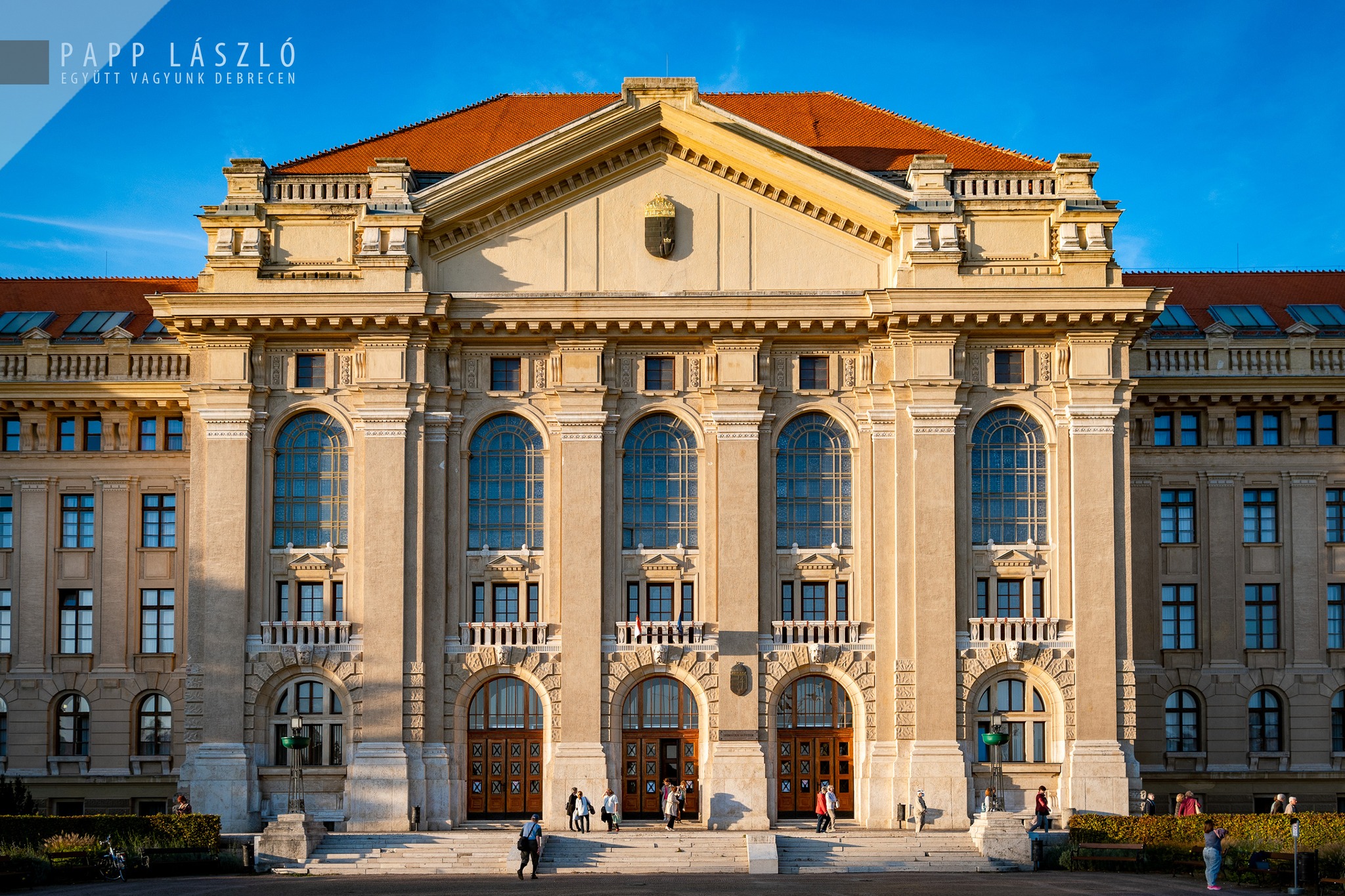 University of Debrecen, Main Building
University of Debrecen, Main Building
The University was created out of the academic sections the Reformed College, thus it also had a Faculty of Theology between 1914 and 1950. The spiritual legacy of the Reformation is commemorated in the Main Building by the stained-glass windows of the Great Hall and the memorial plaques of the Ceremonial Courtyard.


